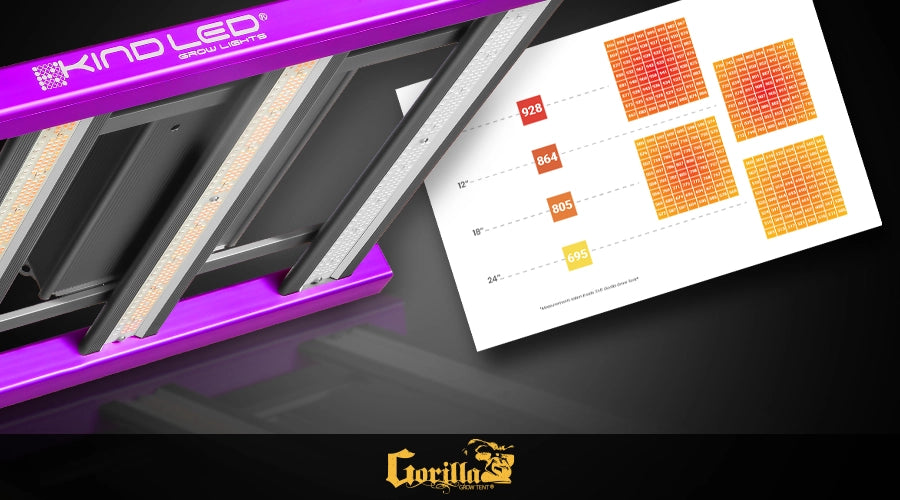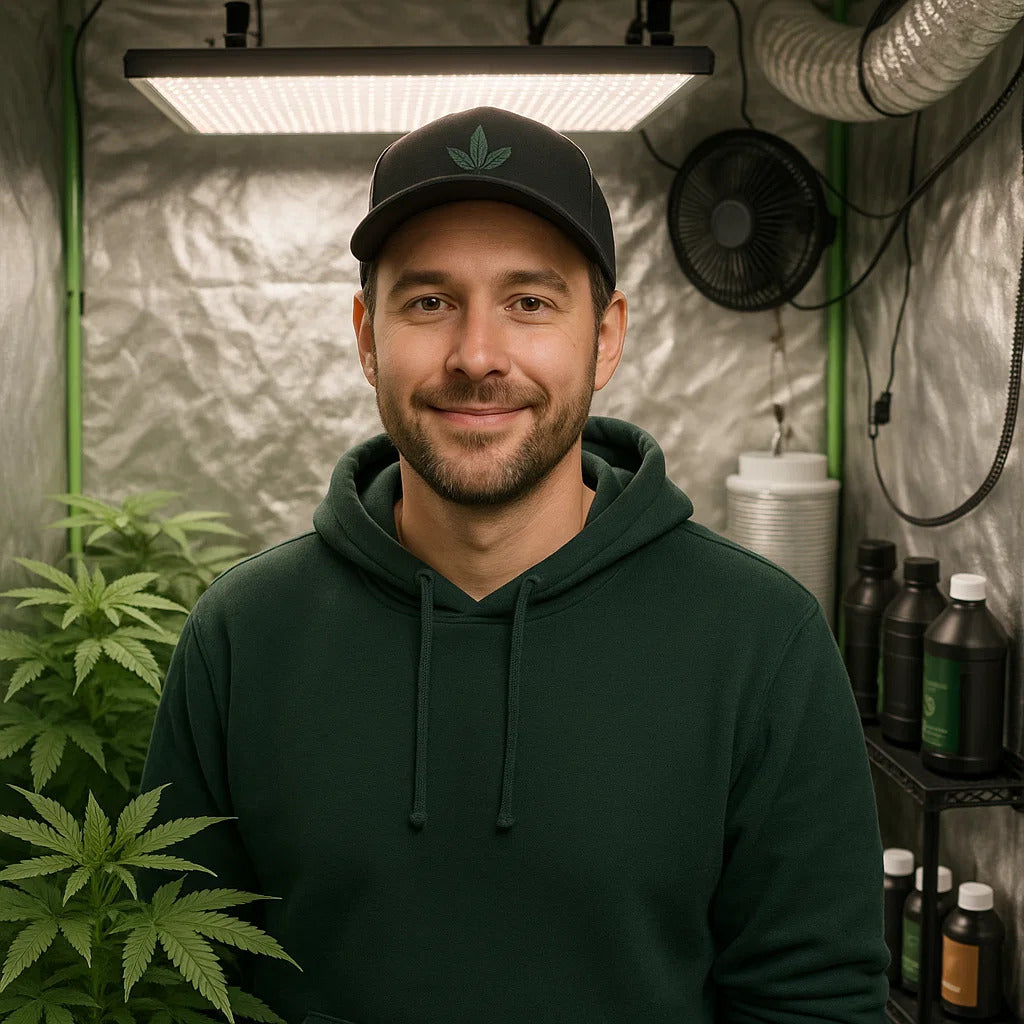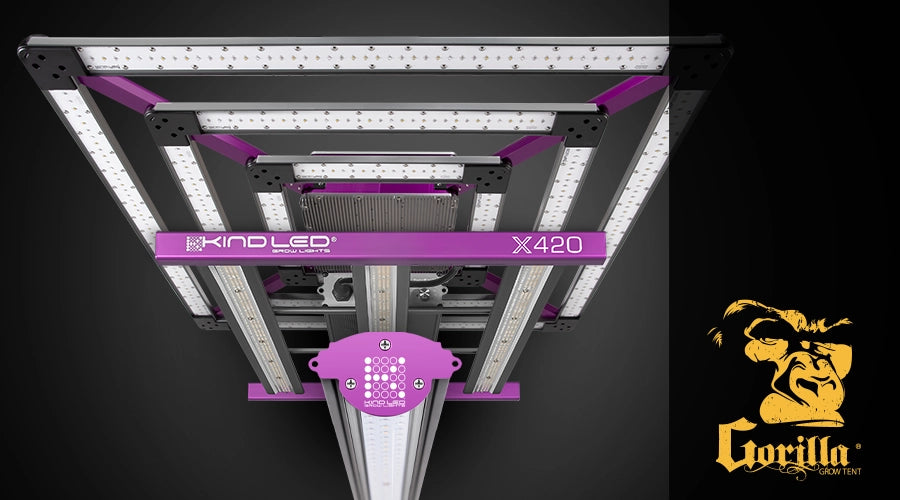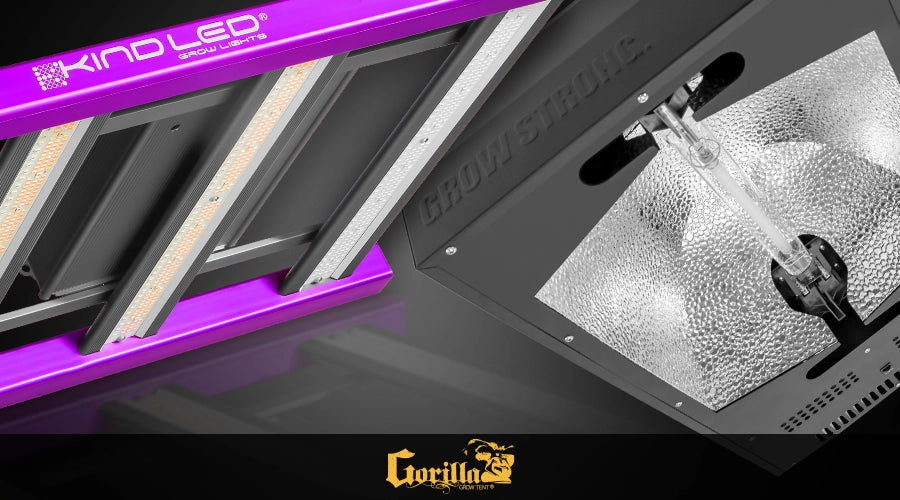
Importance of PPFD in LED Grow Lights
Importance of PPFD in LED Grow Lights
In this article, we will talk about a technical feature of LED lamps, which is the most important apparatus of indoor gardening.
Shedding Light on the Importance of PPFD in LED Grow Lights
PPFD, or Photosynthetic Photon Flux Density, may sound like an obscure term. Simply put, it is a measure of the amount of PAR (Photosynthetically Active Radiation) that reaches a certain area per second.

Illuminating the Way: Understanding PPFD's Role in LED Grow Lights
As everyone knows, plants need a certain amount of light to grow; the intensity of this light is measured by PPFD.
Let's keep this in mind; it's imperative that you use the right lighting for your plants. If a plant receives too little light, it may not grow properly or produce enough energy for healthy growth. On the other hand, if a plant gets too much light, it can become stressed and even burn.
PPFD is technically a value to consider when using LED lamps for indoor growing. Because it directly affects the plant's ability to photosynthesize and grow. As growers, you must measure the PPFD of the grow light to ensure that your plants receive the appropriate amount of light for optimum growth.
PPFD: The Key to Success with LED Grow Lights
Of course, different types of plants have different PPFD requirements, so it's important to choose an LED grow light that can be adjusted to provide the right amount of light for the plants being grown. Some LED grow lights come with adjustable intensity settings, while others have multiple spectrums to choose from, allowing growers to customize the light to the specific needs of their plants.
Another important consideration when it comes to PPFD and LED grow lights is the distance between the light source and the plants. PPFD values can vary greatly depending on the distance between light and vegetation. As a general rule, plants should be positioned at the optimum distance from the light source to ensure they receive the appropriate PPFD levels.
PPFD is also an important consideration when it comes to energy efficiency. By using LED grow lights with high PPFD ratings, growers can be sure they are providing the right amount of light to their plants while minimizing energy waste. LED grow lights are much more energy efficient than traditional HID lights and are, therefore more environmentally friendly.
LED Grow Lights for Hydroponics: Maximizing Your Plant's Potential
You must have heard of soilless agriculture, which is one of the most popular farming methods in recent years. What we call the hydroponic method is a method of growing plants without the need for soil using water and nutrient solutions. This farming method has created a serious alternative to traditional agriculture in recent years due to the efficient use of resources.
As with all forms of cultivation, you need to provide your hydroponic plants with adequate lighting to maximize their potential. LED grow lights would also be a great choice for hydroponics, as they are energy efficient, emit less heat, and provide specific wavelengths of light that plants need for photosynthesis.
The Benefits of Using LED Grow Lights for Hydroponics
Let's try to help you maximize your plant's potential with LED grow lights for hydroponics with a few suggestions.
Choose the right spectrum:
Plants require different wavelengths of light at different stages of growth. For example, blue light is required for vegetative growth and red light is required for flowering and fruit formation. LED grow lights come in different spectrums, so you need to choose the right one for the growth stage of your plants.
Determine the correct density:
The light intensity your plants need will depend on the growth stage and type of plant. Too much or too little light can harm the growth and development of your plants. You can use a light meter to determine the correct intensity for your plants.
Set the correct distance:
LED grow lights should be placed the right distance from plants to ensure they receive enough light without causing any damage. The distance will depend on the type of LED grow light and the intensity of the light. As a general rule, LED grow lights should be placed approximately 12-18 inches above the plants.
Provide sufficient light time:
The amount of light exposure your plants need will depend on their growth stage. Most plants need 12-16 hours of light a day. You can use a timer to automate the lighting schedule for your plants.
Maintain the right temperature:
LED grow lights emit less heat compared to other lighting sources, but they still generate some heat. You must ensure that the temperature in your grow room is kept in the optimum range for your plants to grow.
Consider the size of your growing area:
The size of your grow area will determine the number of LED grow lights you need. Make sure to choose LED grow lights that are suitable for the size of your grow area to ensure your plants receive adequate light.
Check the quality of LED grow lights:
The quality of LED grow lights can vary significantly between brands and models. Investing in high-quality LED grow lights is essential to ensure your plants get the right spectrum of light and the lights last a long time.
Monitor your plants regularly:
Even with the right LED grow lights, you need to monitor your plants regularly to make sure they are getting enough light and that they are growing and developing properly.
Keep your LED grow lights clean:
Dust and debris can build up in LED grow lights, reducing their efficiency and potentially causing damage. Clean your LED grow lights regularly to ensure they are working at their best.
Consider using additional lighting:
In some cases, you may need to use supplemental lighting to ensure your plants get enough light. For example, if you have a large growing area or your plants need more light at certain growth stages, you may need to add additional LED grow lights.
LED Grow Lights for Small Spaces: Compact Options for Your Indoor Garden
In this article, we wanted to introduce you to a few of the best LED light options that you can choose according to the size of your area for indoor cultivation.
Choosing the Right LED Grow Light for Your Small Indoor Garden
Kind LED X220 Herbal Bar Light: The Kind LED X220 Herbal Bar Light is designed to provide high-intensity light for rapid vegetative growth. It measures 47 x 3 x 2.5 inches, making it larger than some of the other options on this list, but still a compact option for small indoor gardens.
Kind LED X220 Flower Bar Light: The Kind LED X220 Flower Bar Light is the bloom stage equivalent of the X220 Herbal Bar Light. It also measures 47 x 3 x 2.5 inches and provides a high-intensity light ideal for flowering plants.
KindLED X220 is a larger option best suited for small indoor gardens and provides high-quality, efficient light for plant growth.
Small but Mighty: LED Grow Lights for Compact Indoor Gardens
The Kind LED Grow Light Bar is a versatile and compact option for small indoor gardens and provides high-quality, efficient light for plant growth. Here are some options to consider:
Kind LED X40 Bar Light: This LED grow light bar measures only 20.5 x 2.4 x 1.5 inches, making it a great option for small spaces. It provides a narrow beam angle and a high-intensity light ideal for vegetative growth.
Kind LED X40 Flower Bar Light: The Kind LED X40 Flower Bar Light is another compact option measuring only 20.5 x 2.4 x 1.5 inches. It provides a narrow beam angle and high-intensity light, ideal for the flowering stage of plant growth.
Kind LED X80 Bar Light: The Kind LED X80 Bar Light measures 36 x 2.4 x 1.5 inches, making it compact enough for small spaces. Provides a wider beam angle and higher light output for faster growth than X40 models.
How to Calculate Wattage for LED Grow Lights
In this short article, we will again touch on a technical issue: How do you calculate the wattage of LED lights? This information will assist you in choosing a light for your growing area.
Factors to Consider When Calculating Wattage for LED Grow Lights
To calculate the wattage of LED grow lights, you need to consider the following few factors:
Area of cultivation area:
Identify the square footage of the area where you want to install the LED grow lights.
Required light intensity:
Different plants have different light intensity requirements. You need to research the specific light requirements for the plants you want to grow.
The efficiency of LED grow lights:
LED grow lights come in different efficiency ratings, measured in lumens per watt (lm/W). The higher the rating, the more efficient the LED grow light.
How to Calculate Wattage for Maximum Yield
Once you have determined the area of your grow area and the light intensity required, you can use the following formula to calculate the wattage of your LED grow lights:
Watt = (Growing area x required light intensity) / Efficiency of LED grow lights
For example, let's say you have a 10 square meter growing area and you want to grow plants that require 20,000 lumens of light intensity. If your LED grow light has an efficiency rating of 2.5 lm/W, the required wattage will be:
Power = (10 x 20,000) / 2.5 = 80 watts
Therefore, you will need an 80-watt LED grow light to provide enough light for your plants in a 10 square meter grow area.

Lena Myles
I'm a mushroom enthusiast and home cook based in Oregon. I'm passionate about foraging and creating fungi-focused recipes, especially delicious, plant-based dishes using gourmet mushrooms like trumpet, shiitake, and oyster. When I’m not in the kitchen, you’ll usually find me wandering the woods in search of new wild flavors.


